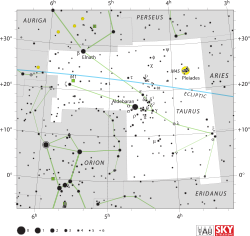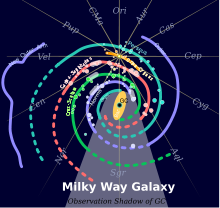NB As well as this startling revelation, (absolutely true, I swear on a stack of bibles), I also enjoyed former lives as a number of noteable people which you can read about in MY STORY.
For example, Beethoven. I actually remember nothing about the life of Einstein, but I do remember writing my/his essays http://www.bartleby.com/173/
It was also as Isaac Newton that I wrote about gravity, leading to some new scientific work. I say this, not to boast because we all do what we can to advance science, and a lot of great work has come since, it is a team effort, but I do appreciate the chance to make a contribution, and do not claim to be infallible in matters of science. God has done me a great honour in giving me the intelligence to have clear insight.
It was a few days before the 4th of July 1054. In those days there was quite a lot of suspicion between the Chinese and the West. They were not as trusting as they are today.
As I related in my book, I had been living on the planet Pluto, and believe it or not I already knew the speed of light. This was worked out using parralex across the solar system. The Crab nebula was 5,000 light years away. So when God took me to watch something, I actually thought I was going back in time to about 5,000 years ago when the event happened.
As we watched, the red giant which was teh planet's sun was swelling visibly. On the planet, people were still dancing, even though their planet must have been millions of years older than ours, I could see them, and to me they looked remarkably primitive, as all they could do was dance and have fun, in a night club.
Asw God and I continued to watch, the red giant swelled until I would say it almost touched the planet itself, and then it exploded.
It was the most beautiful thing I have ever seen, and not just because it immediately obliterated these selfish, useless self indulgent, pleasure seeking hedonistic people, who none of them was any different from the others. They produced nothing and just danced all teh time, but I was concentrating on teh colours of the fantastic gas explosion. I could see it all in slow motion, and I watched intently, but I was aware that God was watching it even more intently than me, in much more detail, at an even slower state of slow motion, and enjoying it even more than me. In fact I could say I had become a little bored with it after a while, but God was still watching every detail intently.
Then, shortly after I was back, somewhere a lot closer to earth, and then I was on earth. It was the day before the crab explosion would have been visible from earth, so the light from that explosion was still 24 hours away. There was grass on the hills, and I was speaking to some chinese scholars who recognised me as their former Emperor. I told them thaat there was going to be a supernova, a bright light coming from teh constellation Tarus, about 5,000 light years away. They asked me when, and I replied, that it was hard to be certain about the exact time because I wasn't certain I had the exact distance, but I said, probably in the next two days, probably tomorrow before noon. And it was.


The constellation Taurus as it can be seen by naked eye.[4] The constellation lines have been added for clarity.
Orion's Belt or The Belt of Orion is an asterism in the constellation Orion. It consists of the three bright stars: ζ Ori (Alnitak), ε Ori (Alnilam), and δ Ori (Mintaka). Alnitak is approximately 800 light years away from Earth and, taking into consideration ultraviolet radiation, which the human eye cannot see, Alnitak is 100,000 times more luminous than the Sun.[1] Alnilam is approximately 1340 light years away from earth and shines with magnitude 1.70. Considering ultraviolet light Alnilam is 375,000 times more luminous than the Sun.[2] Mintaka is 915 light years away and shines with magnitude 2.21. Mintaka is 90,000 times more luminous than the Sun. Mintaka is a double star. Both stars orbit around each other every 5.73 days.[3] Looking for Orion's Belt in the night sky is the easiest way to locate the constellation Orion in the sky. In the Northern hemisphere, Orion's Belt is best visible in the night sky during the month of January at around 9.00 pm.[4]
There is an account of the star from the Khitan Liao Dynasty, which ruled in the area around Manchuria from 907-1125. The book in question, the Qidan Guozhi, was compiled by Ye Longli in 1247. It includes various astronomical notes, some of which are clearly copied from the Song Shi. This entry referring to the star of 1054 seems unique:
Chongxi era of the reign of [King Xingzong], twenty-third year eighth lunar moon, the ruler of the realm is dead. It happened before a solar eclipse at noon, and a guest star appeared. The highest office at the Office of History, Liu Yishou had said "These are omens of the death of the King." This prediction has been realised.
The Crab Nebula (catalogue designations M1, NGC 1952, Taurus A) is a supernova remnant and pulsar wind nebula in the constellation of Taurus. The nebula was observed by John Bevis in 1731; it corresponds to a bright supernova recorded by Arab, Chinese and Japanese astronomers in 1054.
Located at a distance of about 6,500 light-years (2 kpc) from Earth, the nebula has a diameter of 11 ly (3.4 pc) and expands at a rate of about 1,500 kilometers per second. It is part of the Perseus Arm of the Milky Way Galaxy.
At the center of the nebula lies the Crab Pulsar, a neutron star (or spinning ball of neutrons), 28–30 km across,[5] which emits pulses of radiation from gamma rays to radio waves
with a spin rate of 30.2 times per second. The nebula was the first
astronomical object identified with a historical supernova explosion.
The remnant of SN 1054, which consists of debris ejected during the explosion, is known as the Crab Nebula. It is located in the sky near the star Zeta Tauri (ζ Tauri). Some of the remnant of the explosion formed a pulsar, called the Crab Pulsar (or PSR B0531+21). The nebula and the pulsar it contains are the most studied astronomical objects outside the Solar System.
Zeta Tauri (ζ Tau, ζ Tauri) is a binary star in the constellation Taurus, the Bull. Known to the ancient Babylonians as Shurnarkabti-sha-shutu, meaning "the star in the bull towards the south," Zeta Tauri is among the most prominent of the stars in well-known constellation figures, representing one of the celestial bull's protruding horns.
It radiates the light of approximately 5,700 of our own sun from a surface heated to 22,000 kelvins. Together, temperature and luminosity yield a radius 5.2 times that of the Sun. What makes the star really special, however, is not its high temperature and luminosity, but its rotation and mass loss. The equatorial rotation speed has been measured as high as 330 kilometers per second, which is 115 times that of the Sun, the star spinning around with a period of only one day (as opposed to the 25-day solar rotation period). The rotation, which is still well short of that needed to break up the star, is somehow related to a thick disk of matter that surrounds it. The disk radiates bright emissions from hydrogen in the red and blue parts of the spectrum, making Zeta Tauri one the sky's best-known "B-emission" stars. The star and disk are both large enough to have had their angular diameters actually measured. The disk is some 64 solar diameters across.
Taurus is one of the constellations of the zodiac. Its name is a Latin word meaning 'bull', and its astrological symbol is a stylized bull's head: ![]() (Unicode ♉). Taurus is a large and prominent constellation in the northern hemisphere's winter sky, between Aries to the west and Gemini to the east; to the north lie Perseus and Auriga, to the southeast Orion, to the south Eridanus, and to the southwest Cetus.
(Unicode ♉). Taurus is a large and prominent constellation in the northern hemisphere's winter sky, between Aries to the west and Gemini to the east; to the north lie Perseus and Auriga, to the southeast Orion, to the south Eridanus, and to the southwest Cetus.
A supernova causes a lot of damaging radiation, even to planets like ours at a distance of 5,000 light years.
Located at a distance of about 6,500 light-years (2 kpc) from Earth, the nebula has a diameter of 11 ly (3.4 pc) and expands at a rate of about 1,500 kilometers per second. It is part of the Perseus Arm of the Milky Way Galaxy.
A light-year, also light year or lightyear (symbol: ly) is a unit of length, equal to just under 10 trillion kilometres (10×1015 metres, 10 petametres or about 6 trillion miles). As defined by the International Astronomical Union (IAU), a light-year is the distance that light travels in a vacuum in one Julian year.[1]
The Crab nebula is easily observed by amateur astronomers thanks to its brightness, and was also catalogued early on by professional astronomers, long before its true nature was understood and identified. When the French astronomer Charles Messier watched for the return of Halley's Comet in 1758, he confused the nebula for the comet, as he was unaware of the former's existence. It was because of this error that he created his catalogue of non-cometary nebulous objects, the Messier Catalogue, to avoid such mistakes in the future. The nebula is catalogued as the first Messier object, or M1.
Halley's returns to the inner solar system have been observed and recorded by astronomers since at least 240 BCE. Clear records of the comet's appearances were made by Chinese, Babylonian, and medieval European chroniclers, but were not recognized as reappearances of the same object at the time. The comet's periodicity was first determined in 1705 by English astronomer Edmond Halley, after whom it is now named. Halley's comet last appeared in the inner Solar System in 1986 and will next appear in mid-2061.[12]


The Crab Nebula, remnant of SN 1054. Credit:
The Crab Nebula, the shattered remnants of a star which exploded as a supernova, the light of which reached Earth in 1054 AD
SN 1054 is a supernova that was first observed as a new "star" in the sky on July 4, 1054 AD, hence its name, and that lasted for a period of around two years. The event was recorded in multiple Chinese and Japanese documents and in one document from the Arab world. While it has been hypothesized that SN 1054 was also observed by American-Indian tribes and Europeans, it has not been conclusively proven.
Located at a distance of about 6,500 light-years (2 kpc) from Earth, the nebula has a diameter of 11 ly (3.4 pc) and expands at a rate of about 1,500 kilometers per second. It is part of the Perseus Arm of the Milky Way Galaxy.
In astronomy, a Julian year (symbol: a) is a unit of measurement of time defined as exactly 365.25 days of 86 400 SI seconds each, totaling 31 557 600 seconds. The Julian year is the average length of the year in the Julian calendar used in Western societies in previous centuries, and for which the unit is named. Nevertheless, because a Julian year measures duration rather than designating a date, the Julian year does not correspond to years in the Julian calendar or any other calendar. Nor does it correspond to the many other ways of defining a year.
The Julian calendar began in 45 BC (709 AUC) as a reform of the Roman calendar by Julius Caesar. It was chosen after consultation with the astronomer Sosigenes of Alexandria and was probably designed to approximate the tropical year (known at least since Hipparchus).
The Julian calendar has a regular year of 365 days divided into 12 months with a leap day added to February every four years. The Julian year is, therefore, on average 365.25 days long. The motivation for most calendars is to fix the number of days between return of the cycle of seasons (from spring equinox to the next spring equinox, for example), so that the calendar could be used as an aid to planting and other season-related activities. The cycle of seasons (tropical year) had been known since ancient times to be about 365 and 1/4 days long.
The more modern Gregorian calendar eventually superseded the Julian calendar: the reason is that a tropical year (or solar year) is actually about 11 minutes shorter than 365.25 days. These extra 11 minutes per year in the Julian calendar caused it to gain about three days every four centuries, when compared to the observed equinox times and the seasons. In the Gregorian calendar system, first proposed in the 16th century, this problem was dealt with by dropping some calendar days, in order to realign the calendar and the equinox times. Subsequently, the Gregorian calendar drops three leap year days across every four centuries.

Advertise on this page: txt to (New Zealand) 027-21-567-42 £10 -12 months
Advertising is a form of communication used to encourage or persuade an audience (viewers, readers or listeners) to continue or take some new action. Most commonly, the desired result is to drive consumer behavior with respect to a commercial offering, although political and ideological advertising is also common. The purpose of advertising may also be to reassure employees or shareholders that a company is viable or successful. Advertising messages are usually paid for by sponsors and viewed via various traditional media; including mass media such as newspaper, magazines, television commercial, radio advertisement, outdoor advertising or direct mail; or new media such as websites and text messages.